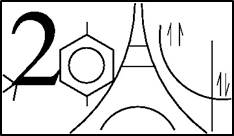Solvent effects are critical for studying chemical reactions. The methods used to describe these effects can be divided in three groups: dielectric continuum model, cluster-continuum model and explicit water molecules. The aim of this study is to evaluate the free energy barrier of the N-formyl methionine self-activation. This example was chosen for its possible implication in the synthesis of peptides in the prebiotic conditions, ie the primitive ocean [1].
Solvent effects are expected to play a key role for this reaction because it involves the formation of a hydroxyl ion. First, static QM calculations were performed in small clusters of water and a continuum of solvent. As expected, we show a large variation of the activation barrier depending on the number of water in the cluster. This variation is due to a too weak description of the solvation of the hydroxide ion formed during the reaction. So the system was solvated in a box of explicit water to ensure an accurate description of solvent effects.
Ab initio molecular dynamics studies were conducted to provide a better description of the reaction and a larger sampling. A protocol including complementary metadynamics and thermodynamics integration studies was proposed to overcome the rare events issue that cannot be explored by dynamics. This protocol provides a realistic description of the transition state and an accurate estimation of the activation barrier. Metadynamics allows a quick overview of the reaction path and an access to transition state structures without human intervention. It gives structures to perform thermodynamics integration, which provides a good estimation of the free energy of activation.
[1] Milet, A., Gouron, A., David, R., Jamet, H., & Vallee, Y. (2013, September). En route to life: The very first step. In ABSTRACTS OF PAPERS OF THE AMERICAN CHEMICAL SOCIETY (Vol. 246)
- Image

 PDF version
PDF version

